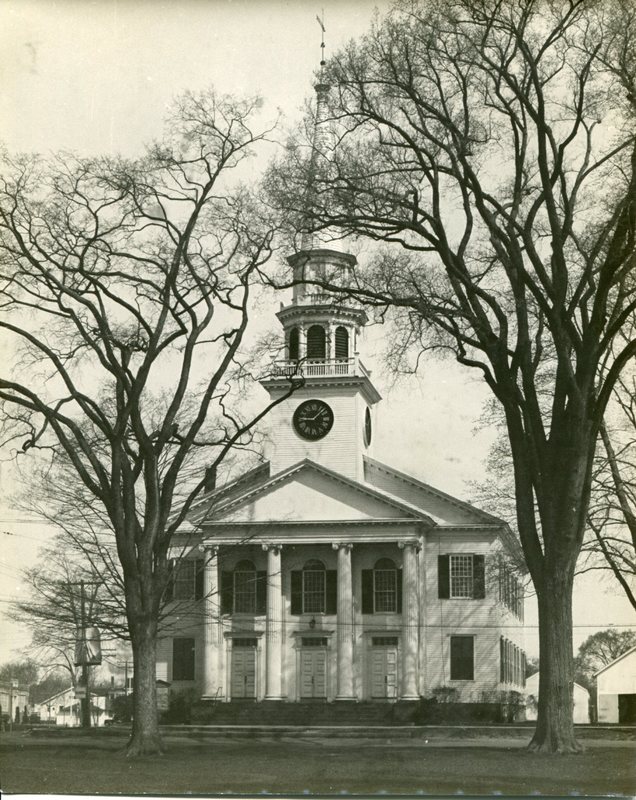The history of Guilford’s churches provides insight into the community’s early development. Religion and society were inextricably intertwined, and the first church was part of the community’s foundation. Guilford’s settlers, members of the Puritan Reform Party, included the church in their shipboard Covenant in 1639. In 1643, the first Meeting House was constructed on the Green, its location a clear indication of the church’s importance in the fledgling settlement. Church leaders such as the Reverend Henry Whitfield and the Reverend John Higginson were instrumental in governing the community in the initial generations. They were among the seven pillars (male leaders) of the church. Even the name “Guilford,” which honored their English homeland, was chosen during a church meeting.
A larger building replaced the first one on the Green in 1713. In 1830, a new building was erected overlooking the Green from the north. “The Glory of the Green,” the First Congregational Church still stands today. Its congregation traces its lineage straight back to the community’s founding families.
As the community expanded, so did the churches, anchoring settlement in East Guilford (Madison), Cohabit (North Guilford), and North Madison (North Bristol). Within Guilford, new ideas took hold. Christ Church was organized in 1744, to the dismay of the Congregationalists. The Anglican congregation built a small church on the Green in 1748. Led by Samuel Johnson, from a prominent Guilford family, this church enjoyed popularity until the eve of the American Revolution, when Anglicans were often suspected of British sympathizing. Following the Revolution, the Anglican church was redefined as Episcopalian, and Guilford’s church flourished once again. A new building, Christ Episcopal Church, was completed alongside the Green in 1838 and still stands today.
As nearby Yale University’s influence grew, Guilford’s well-educated ministers became conduits for new schools of thought and agents of social change. In 1775, Rev. Daniel Brewer, of the community’s Fourth Congregational Society, was dismissed for preaching fundamentalism and the separation of church and state. A Methodist Society was established in the 1830s, bringing a new Protestant denomination to the community. In the 1840s, veteran clergyman Rev. Aaron Dutton, who occupied the pulpit of the First Congregational Church from 1806 to 1842, was forced out because of his strong belief in the separation of church and state, and his refusal to allow the anti-slavery society to meet in the church. This contributed to a schism in which over a hundred members left to establish a new church, the Third Congregational Church, which was built overlooking the Green in 1844. Seventy years later, the two congregations mended their ideological rift and merged once again into the First Congregational Church. The Christian Science Society made their home in the abandoned Third Congregational building in 1951, and remains there still.
Guilford’s churches also anchored immigrant experiences, serving as a touchstone to lives left behind and a solace in a new land. The Irish were the first non-Protestant immigrants to Guilford. Many came in the 1850s to build the railroad. Their earliest Catholic masses were held at the Whitfield House, but a fire in the late 1850s forced them to move. The fire may have been intentional, part of anti-immigration sentiment that was rising across the nation. St. George Catholic Church was established in 1860—first, a small chapel in a former store, and in 1876, an edifice on Whitfield Street that still stands today. In 1962, further north along Whitfield Street, the current St. George Catholic Church was built facing the Green.
More than a dozen churches serve Guilford and its environs today. In past and present, Guilford’s churches remain a tangible expression of the Covenant. Their beautiful historic buildings, their faithful congregations, and the good works they have accomplished in the community are social and structural representations of the commitment set forth in the founding document.
Donley Lukens, photographer, “First Congregational Church, 110 Broad Street, circa 1930-1945,” Guilford Free Library Archives
